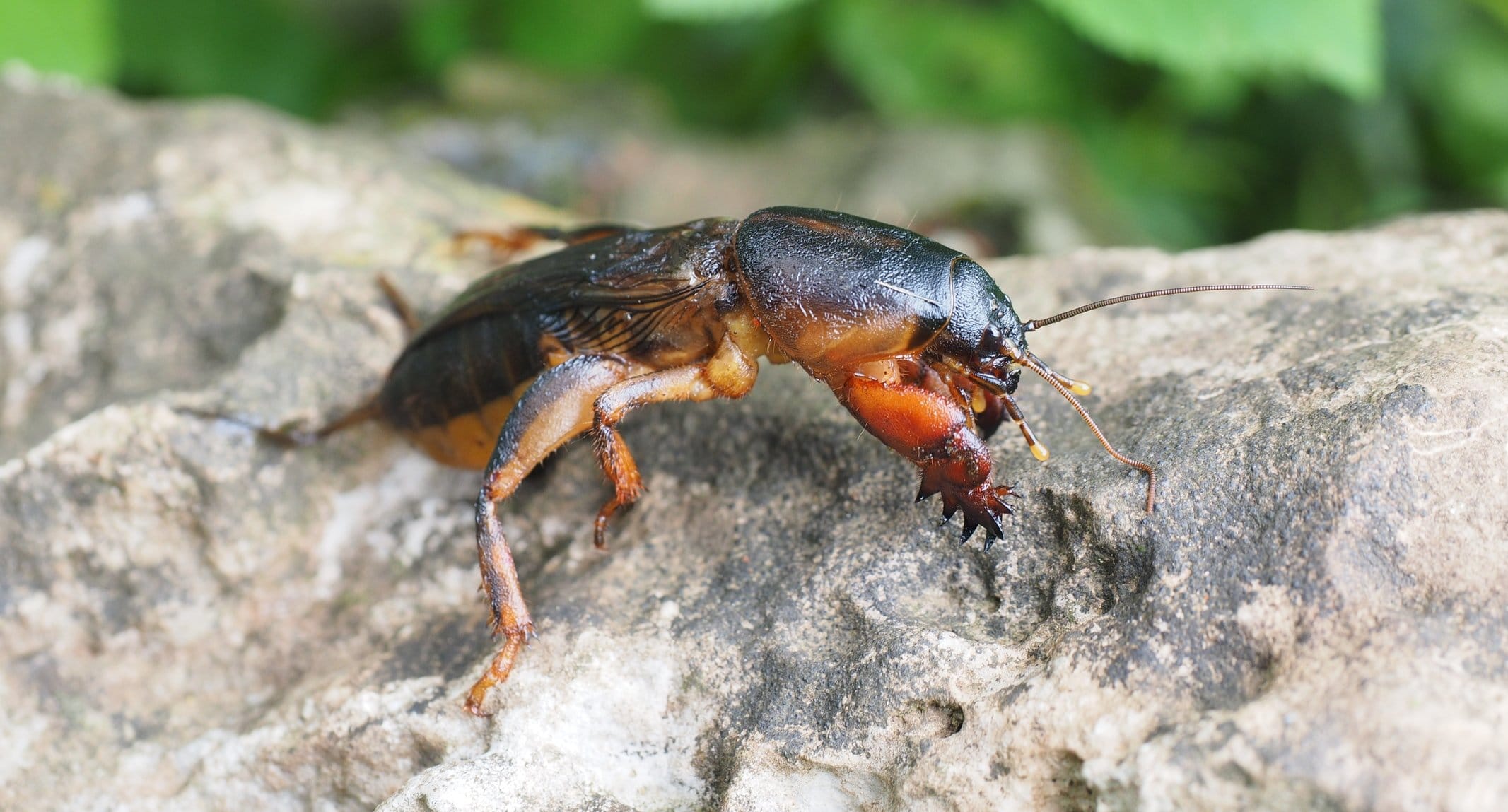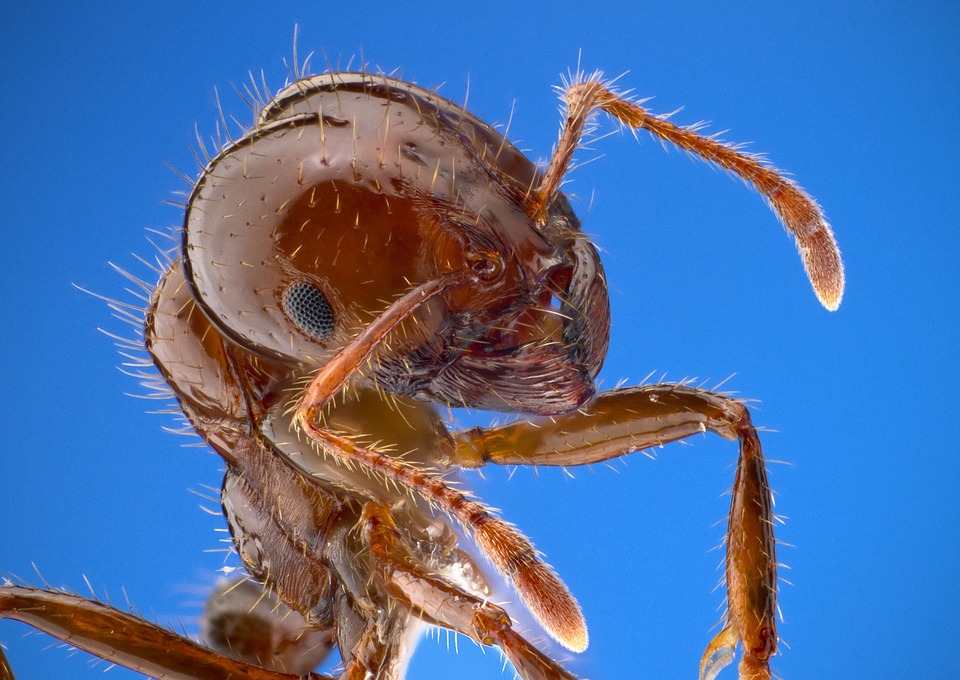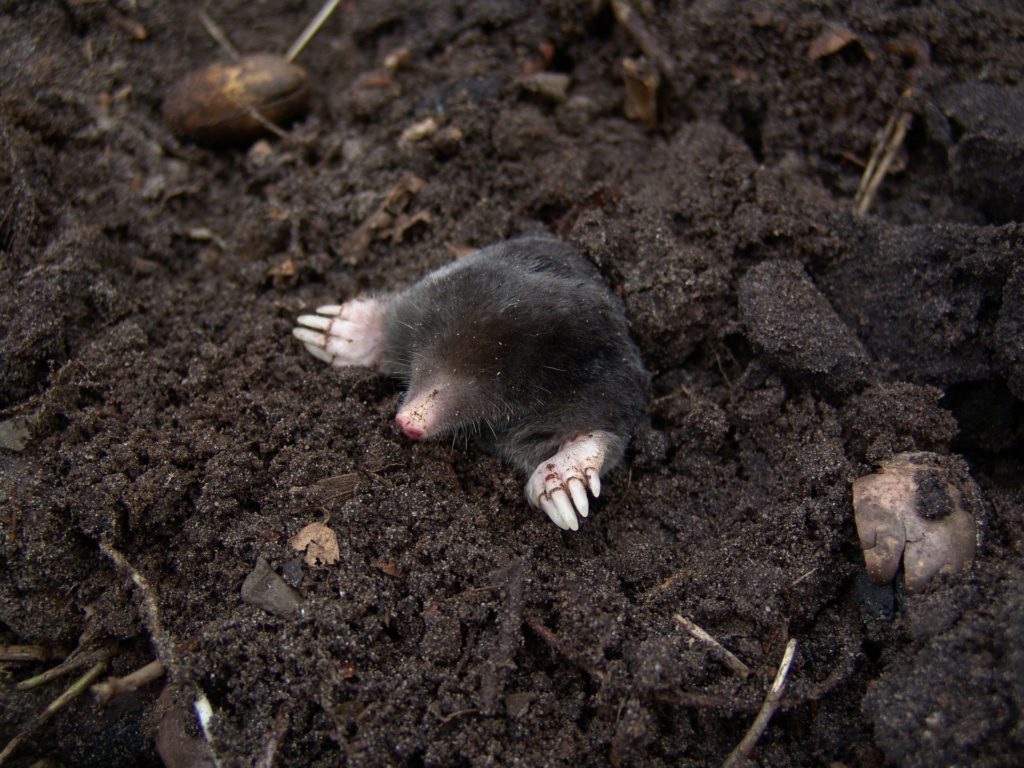
Few things frustrate homeowners more than caring for your lawn, only to find it damaged by creepy, crawly critters. Lawn care is hard enough without having to deal with Charlotte pests. Want to know what’s causing you this extra grief? Here are the likely suspects — the five worst lawn pests in Charlotte, N.C.
Lawn Grubs
These are some of the most destructive pests you’ll find in your lawn. Grubs are the larval form of scarab beetles. The most common ones in the Charlotte area are Japanese beetles and Junebugs. Adult beetles appear in late May through June. They feed, mate and lay eggs, then die after four or five weeks. The eggs hatch several weeks later as larvae. The grubs feed on the roots of your grass in late summer through early fall, wreaking havoc underneath the surface. One of the first signs you’ve got a grub infestation is spongy grass. You’ll also see brown spots that don’t turn green with watering. If your turf is severely damaged, you can pull it up like a carpet. You may also notice an abundance of birds on your lawn if you’ve got an infestation since they feed on the grubs. You’ll also notice holes dug by raccoons, skunks, or other wildlife looking for a snack.
See “Lawn Grubs: How and When to Kill Them” for more help in controlling this pest.
Fire Ants

These dangerous ants continue their march across North Carolina. Entomologist Dr. Terri Billeisen with North Carolina State University’s extension office says you’ll find fire ants in 74 out of 100 counties in the state.

This includes Mecklenburg County. This is happening “because of favorable climate conditions. The warm weather helps them multiply and our spike in residential. And industrial development gives the colonies the opportunity to nest in building materials, which are then moved around the state.”
Fire ants arrived in the United States in the 1930s by way of South America. The red to reddish-brown ants build tunnel systems underground, complete with large dirt mounds above ground. These mounds are the first sign that fire ants have invaded your lawn.
Colonies may contain up to half a million ants and can cover a half-acre of land. They’ll aggressively attack anyone who disturbs them. This includes kids, pets, or a homeowner mowing the lawn. Their painful stings cause red, itchy bumps that can last up to a week. The bites can be deadly to small pets, children, and people allergic to fire ants.
See “Pest Control for Ants: a Basic Guide” for more help.
Chinch Bugs
Chinch bugs love to feast on grass, and their favorites happen to be some of the most-common turfgrasses found in North Carolina. This includes Kentucky bluegrass, perennial ryegrass, fescues, Zoysiagrass, and Bermuda grass. Chinch bugs are active from early June through late summer. They do their damage by piercing grass stems and crowns with their mouths to suck fluid from the grass. They inject the grass with a toxin that turns it yellow. The grass will eventually turn brown and die. You’ll notice the damage as spreading brown patches across your lawn.
See “Chinch Bugs in Turf” for more information.
Mole Crickets
This nasty looking bug (pictured at top of page) has a grayish-brown body with short wings and big black eyes. They have mole-like front claws and grasshopper-like hind legs used for jumping. They get their name because they use their front claws to burrow underground like moles. This digging pushes soil up to the surface, damaging grass roots and seeds. Mole crickets spend their days underground and come to the surface at night to feed on grass and insects. The most visible signs of mole cricket damage are small mounds of soil in your lawn and patches of brown grass. Mole crickets emerge from the soil in early spring to mate and lay eggs. After the eggs hatch, the nymphs progress through several stages over the summer. You’ll usually notice their damage in late summer after nymphs have grown into larger and more destructive adults.
“Mole Crickets in Turf” can help you see whether this pest has invaded your lawn.
Moles

Moles are another destructive lawn pest but of the mammalian variety. They have grey or black fur and potato-shaped bodies that are 4 to 8 inches long. They also have snouts, small ears, and small black eyes. Their front feet have claws that allow them to dig tunnels underground. This tunneling uproots plants and kills grass roots, leaving you with brown areas in your yard. You’ll also notice dirt mounds that look like small volcanoes. You won’t see the tunnels themselves because they’re 12-18 inches underground. Moles are beneficial in some ways. They aerate the soil with their tunnels. They also eat grubs, lawn insects, and earthworms. If you keep your yard clear of their food supply, moles will likely stay away. They also like damp, soft soil, so avoid overwatering your yard to help prevent a mole invasion.
Moles are a protected species in North Carolina, so using poisons is illegal. Make sure you know the local regulations and start by making certain of your diagnosis. Many homeowners confuse moles, a carnivore that eats insects and grubs, and voles, which gnaw on plant roots and stems.
Use this list to help you identify the most common offenders in Charlotte. Once you know what’s “bugging” your lawn, you can start getting rid of the pests and return your lawn to its green glory.